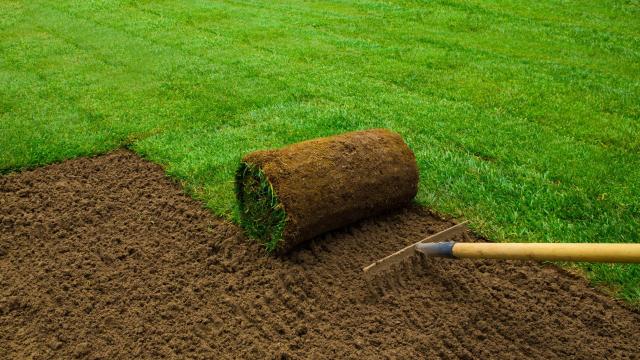When it comes to starting a lawn, there are two ways you can begin: You can prep the ground and sow the seeds, or you can start with a blanket of already grown grass, known as sod, and maintain it so the roots grow deep. Of course, both take different elements of care (and finances), so when should you use one versus the other? Here are a few things to consider.
What it takes to seed a lawn
Laying down seed for your lawn is the more cost-effective and natural way to grow grass. Seeding involves getting the right grass seed, then preparation, patience, and good timing.
The best time to plant grass depends on the type of grass you use, but generally speaking, planting in the spring or early fall is best. You’ll need to test, till, and prep that land, then choose a type of grass that is right for your area. Then you’ll need to even out the ground, spread the seed water, and add another layer of soil to help the germination process.
Should you seed or sod your lawn?
Seed is perfect for someone who needs a specific type of grass for their soil. However, sod only comes in one type, and if that type doesn’t work with your area you’ll have a hard time getting the grass to root. Seeding also offers a stronger root system and greater odds for longevity. On the other hand, sometimes seed does not grow evenly, and multiple seedings will need to happen for a thicker, even lawn.
What to consider when using sod
Sod is a pre-grown patch of grass that’s installed onto the soil to take root. Sodding a lawn is typically more expensive because you’re paying for someone else to grow the grass for you and transport it to your area. A pallet of sod costs about $US400 ($543) without labour, and with installation sodding can cost anywhere from $US2,600 ($3,531)-$US7,000 ($9,505) depending on the size of your yard.
So, basically, sod is great for those who have the means and don’t have the time to grow grass with seeding. In addition, sod helps for angled areas or where erosion is common, which can make it harder for seeds to take.
What are the downsides to sodding your lawn?
There are drawbacks to using sod. The pre-grown grass only comes in a few types, so if you need a specific strain of grass, seed works best. You can treat your soil to help sod acclimate to an area it isn’t used to, but then you’re changing the ecosystem and it might not last. In some cases, once the grass is laid down, it’s difficult for it to grow deep roots, especially if you haven’t adequately tilled and prepped the soil.
Additionally, like a carpet, sod is an all-or-nothing deal: To re-sod, you have to rip up the whole yard, while reseeding doesn’t require as much of an overhaul. The important thing is to know what works in your area. If you enjoy planting, go with seed, but if time is an issue and you’ve got the funds — and if the type of grass works for your area–you might as well choose sod.

Leave a Reply
You must be logged in to post a comment.